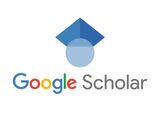Utilizando a criptografia para despertar o interesse e motivar uma aprendizagem significativa no ensino de funções
DOI:
https://doi.org/10.14393/BEJOM-v2-n3-2021-56308Palavras-chave:
Aprendizagem, Funções, Criptografia, EnsinoResumo
Este artigo apresenta uma adaptação de alguns resultados contidos na disserta-ção de mestrado do primeiro autor, [9]. Uma das maiores dificuldades enfrentadas peloseducadores no ensino de hoje é a falta de interesse dos alunos em conteúdos programáticosda matemática, que muitas vezes é reduzida a um conjunto de técnicas, regras e algoritmossem nenhuma aplicabilidade ou justificativa. O objetivo deste trabalho é investigar e ana-lisar possíveis contribuições no ensino-aprendizagem de funções tendo como abordagemmetodológica a resolução de problemas. O tema criptografia acaba despertando a curiosidade e levando a um processo que possibilita a construção de novos conhecimentos, já que o mesmo é parte integrante do dia a dia dos estudantes. A aplicação de jogos possibilitaa construção do conhecimento matemático de forma prazerosa, envolvente e significativa. Pensando nisso, surgiu a ideia de aliar a criptografia a um jogo de caça ao tesouro.
Downloads
Referências
BRASIL, Secretaria de Educação Média e Tecnológica. PCN+: Ensino Médio - Orientações educacionais complementares aos parâmetros curriculares nacionais. Brasília: MEC, 2002. 141p.
DANTAS, Andréa de Araujo. A Criptografia no Ensino Fundamental e Médio. Monografia (especialização), Universidade Federal do Rio Grande do Norte, Caicó-RN, 2016.
MACHINSKI, Alessandra e TROBIA, José. Utilizando jogos como estratégiapara o ensino e aprendizagem da matemática. Cadernos PDE, secretaria de educação do Paraná, Volume 1, Paraná, 2016.
MENEZES, Luiza de Abreu. CARVALHO, Marcos Pavani. Criptografia na salade aula, X Encontro Nacional de Educação Matemática, Salvador, 2010.
NERI, M. Motivos da evasão escolar. [S.l.], 2013. Disponível em: https://www.cps.fgv.br/ibrecps/rede/finais/Etapa3-Pesq_MotivacoesEscolares_sumario_principal_anexo-Andre_FIM.pdf Acesso em: 28/02/2020.
OLIVEIRA JUNIOR, Gilmar Rezende de. Algumas aplicações da criptografia noensino fundamental. Universidade Federal do Tocantins, Dissertação (MestradoProfissional), Palmas- TO, 2015.
POLYA, G. A. A arte de Resolver Problemas. Tradução: Heitor Lisboa de Araújo. Rio de Janeiro, Interciência, 1978.
SÃO PAULO, (Estado) Secretaria da Educação. Currículo do Estado de SãoPaulo: Matemática e suas tecnologias / Secretaria da Educação; coordenação geral, Maria Inês Fini; coordenação de área, Nilson José Machado. ? 1. ed. atual. ?São Paulo: SE, 2011.
VALDEMAR, D. C. Uma metodologia com uso de criptografia pra ensino de funções. 2020. Dissertação (Mestrado em Ensino de Matemática) - Departamentode Matemática, Universidade Federal de São Carlos, Sorocaba, 2020.
Downloads
Publicado
Edição
Seção
Licença
Copyright (c) 2020 BRAZILIAN ELECTRONIC JOURNAL OF MATHEMATICS

Este trabalho está licenciado sob uma licença Creative Commons Attribution-NonCommercial 4.0 International License.
- Os artigos publicados a partir de 2025 são licenciados sob a versão CCBY-4.0. Ao enviar o material para publicação, os autores estarão automaticamente, concordando com as diretrizes editoriais do periódico e assumindo que o texto foi devidamente revisado. A submissão simultânea de artigos a outras revistas é proibida, e, é também proibida a tradução de artigos publicados no periódico para outro idioma sem a devida autorização.
- Os artigos publicados em anos anteriores a 2025 são licenciados sob a versão CC BY-NC 4.0.









